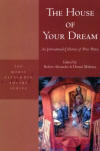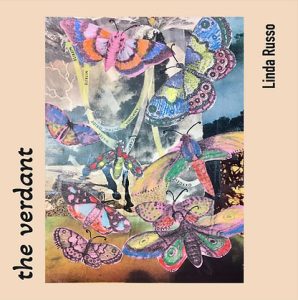The House of Your Dream
In his introduction to The House of Your Dream, Peter Johnson, founding editor of the influential and now defunct magazine The Prose Poem: An International Journal, writes, “About twenty years ago we prose poets lived in relative obscurity, lucky if we could get editors to read, much less publish, our work.” He goes on to recount briefly a history of the genre: its beginnings during the late 60’s and early 70’s in Michael Benedikt’s anthology of prose poems, the several international renaissances it has undergone over the decades, and the current generation of prose poets writing now. He offers the White Pine anthology as a sort of recent history of the prose poem, and with him Alexander and Maloney agree. They write in a short editors’ note in the frontspace of the book, “given the predilection we both feel for the magical form that is the prose poem, it didn’t take long for us to conceive of a prose poem anthology drawn from all the books that White Pine has published (or will soon publish) in its variegated career.”
In his introduction to The House of Your Dream, Peter Johnson, founding editor of the influential and now defunct magazine The Prose Poem: An International Journal, writes, “About twenty years ago we prose poets lived in relative obscurity, lucky if we could get editors to read, much less publish, our work.” He goes on to recount briefly a history of the genre: its beginnings during the late 60’s and early 70’s in Michael Benedikt’s anthology of prose poems, the several international renaissances it has undergone over the decades, and the current generation of prose poets writing now. He offers the White Pine anthology as a sort of recent history of the prose poem, and with him Alexander and Maloney agree. They write in a short editors’ note in the frontspace of the book, “given the predilection we both feel for the magical form that is the prose poem, it didn’t take long for us to conceive of a prose poem anthology drawn from all the books that White Pine has published (or will soon publish) in its variegated career.”
Despite its short length, the book is quite impressive for its expansive table of contents. Alexander and Maloney have collected here over one hundred and forty poems by ninety international authors. Notable contributing authors, whom Johnson calls “poets from the first renaissance,” include Michael Benedikt, Robert Bly, Morton Marcus, Charles Simic, and James Wright; poets from “the second renaissance,” such as Nin Andrews, Killarney Clary, Mary Koncel, P. H. Liotta, Gian Lombardo, and Gary Young; and those poets newest to the genre, such as Kim Addonizio, Kim Chinquee, Peter Connors, Peter Markus, and Tom Whalen. Johnson, in his introduction, also highlights some influences from abroad, naming René Char, Jean Follain, Max Jacob, Chongii Mah, Gabriela Mistral, Imre Oravecz, and Francis Ponge as important international contributors to the genre. The list here indicates both that the prose poem has had a constant loyal following over time and that Alexander and Maloney have successfully documented its historical arc.
But because the poems in the book are arranged alphabetically by author rather than by date of publication, readers may have a harder time appreciating the genre’s historical arc. However, such understanding can be had, though it requires a little more work, such as checking the contributors’ notes and the acknowledgments page, and perhaps hunting down several of the other anthologies from which many of these prose poems have been selected.
What the alphabetical arrangement does accomplish, however, is the emphasis of the importance each of these authors have had in advancing the genre. Reading their various contributions, one gets the sense that the beauty of the prose poem comes from two characteristics: the inherent paradox of the form (prose poetry), and the tendency for the prose poem to be short in length. The author of a prose poem must work within the limitations of length and line, but through prose he or she can also circumvent those limitations. Thus, prose poetry varies greatly from one author to the next, and it is this variety, this dynamic sensibility that has led to the constant reinvention of the form.
Whether readers of this anthology choose to read it slowly straight through, as I did, or skip their way across the table of contents, paging back and forth to whatever poem piques their interest, they will notice many distinct possibilities for the prose poem: as meditation, as in Ponge’s “The Pleasures of the Door”; as narrative, as in Koncel’s “The Big Deep Voice of God”; as nature poem, as in Pablo Neruda’s “The Sand”; as fable, as in Ignatow’s “A Modern Fable”; and as riddle, as in Russell Edson’s “The Prose Poem as Beautiful Animal.” And while these poems, taken one against the other, do vary greatly, their power to hold a reader momentarily in an alternate state of mind unites them in a similar fashion. This perhaps explains why the editors titled the anthology after Vern Rutsala’s prose poem “The House of Your Dream.” In the final lines of the poem, Rutsala writes, “Each object you meet glows with that old light, even / the sidewalk looks like a rainbow – because it is your dream and I am / a stranger here.”





